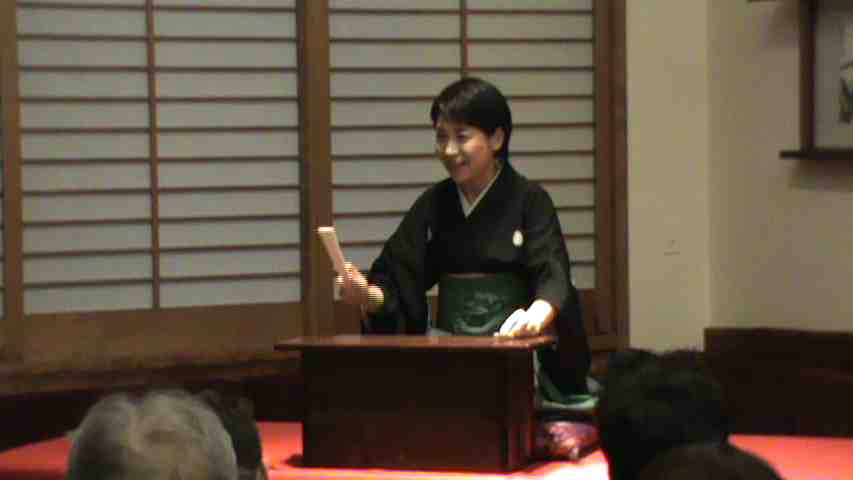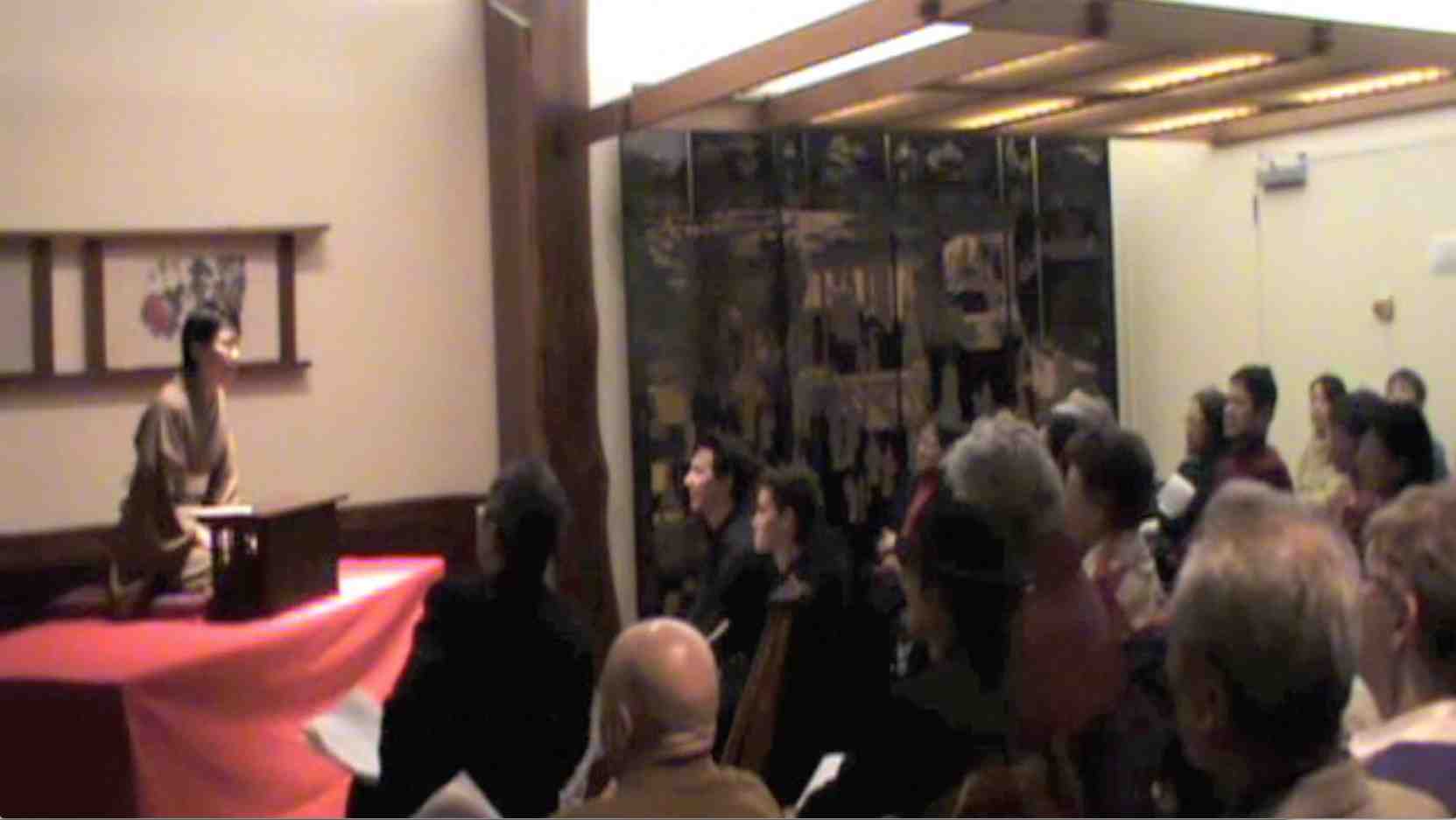2013 Soshitsu Sen XV Distinguished Lecture on Japanese Culture
Kodan Oral Storytelling Performance and Lecture
By Hyuga HimawariFebruary 7, 2013
Himawari is a noted female kōdan storyteller who tells stories based on the Japanese classics. She specializes in warrior tales of the Warring States period and Chūshingura tales. She enjoyed the animated films of Miyazaki Hayao from a young age, and after she graduated from high school, she left Hiroshima and went to Tokyo hoping to become a voice actress, but in 1994, enchanted by the storytelling of Kanda Sanyō II, she became his pupil and began training as a storyteller under the name Kanda Himawari. In 1998, she rose to the second rank. In 2008, she became a main performer, changing her name Hyūga Himawari. In 1999, she won the fourth Okamoto Maki Prize.
Kōdan is one of Japan's traditional forms of storytelling. Keeping rhythm on a desk called a shakudai with a paper fan, the storyteller narrates historical tales, such as war chronicles or tales of martial valor. The origins of kōdan are in the tsujikōshaku of the Edo period, who rhythmically narrated war chronicles like the Taiheiki in the streets; shuraba, or battle scenes, are prized as the foundation of kōdan.
Himawari lectured on the basics of kōdan and introduced one shuraba from “Mikatagahara kassenki,” which records a battle between Tokugawa Ieyasu and Takeda Shingen. She also performed two popular pieces from the classic repertoire: “Yamanouchi Kazutoyo shusse no umasoroe,” about Yamanouchi Kazutoyo, a Warring States period general who finds a chance at worldly success thanks to his wife's help, and “Sorai tōfu,” about the youthful poverty of Ogyū Sorai, a Confucian scholar from the Edo period.
 |
 |